Sewage Pump

What is a Sewage Pump?
A sewage pump is designed to transfer fluids containing solid matter, and it is used in residential, industrial, and commercial applications. Domestic wastewater consists of a liquid with soft solid particles, typically transported through pipes up to 2 inches in diameter. A sewage pump is capable of handling this type of fluid and usually discharges it into a tank, well, or sewage system. These pumps are available in both manual and automatic models and are mostly centrifugal pumps with some design modifications.
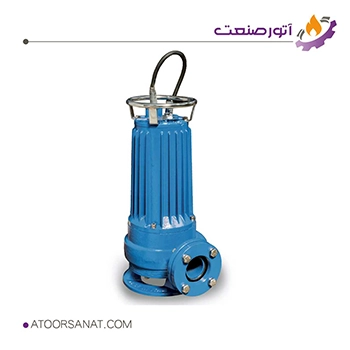
Features:
- Country of Origin: Italy
- Maximum Pressure: 1 – 1.05 – 1.08 – 1.25 – 2.1 – 3.5 – 4.2 bar
- Body Material: Cast iron, stainless steel, molded plastic
- Impeller Material: Cast iron, Noryl, stainless steel
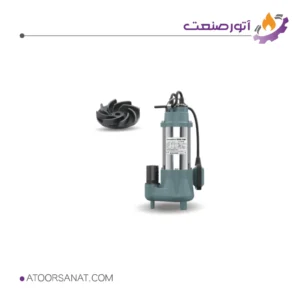
Features:
- Country of Origin: China
- Maximum Head: Up to 140 meters
- Body Material: Cast iron, stainless steel
- Impeller Material: Cast iron, carbide alloy, stainless steel
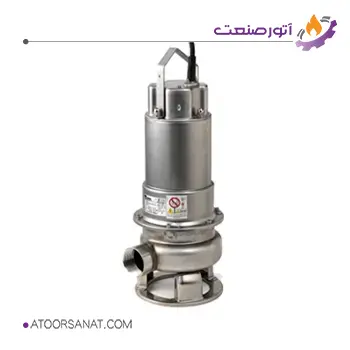
Features:
- Country of Origin: Japan
- Maximum Head: 10 – 20 – 27.5 meters
- Body Material: Cast iron, stainless steel 304
- Impeller Material: Cast iron, stainless steel 304
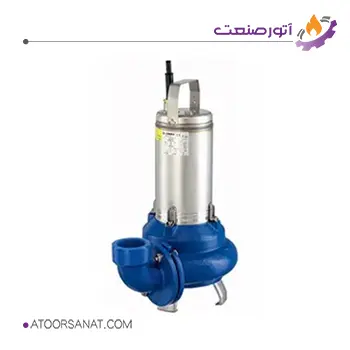
Features:
- Country of Origin: Italy
- Maximum Pressure: 1.5 – 2 bar
- Body Material: Stainless steel 304, cast iron
- Impeller Material: Stainless steel 304, fiberglass, cast iron, stainless steel
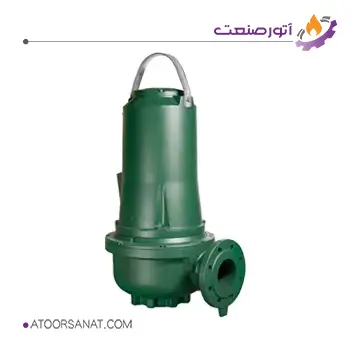
Features:
- Country of Origin: Italy
- Maximum Head: 14 – 25 – 41 meters
- Body Material: Stainless steel 304, stainless steel 316, cast iron
- Impeller Material: Stainless steel 316, stainless steel 304, technopolymer, cast iron
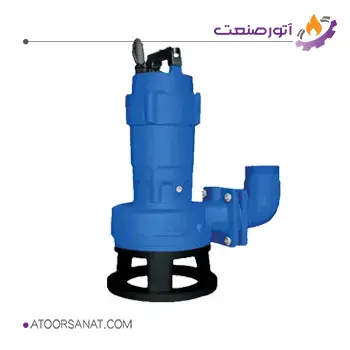
Features:
- Country of Origin: Iran
- Maximum Head: 25 meters
- Body Material: Cast iron, aluminum
- Impeller Material: Cast iron
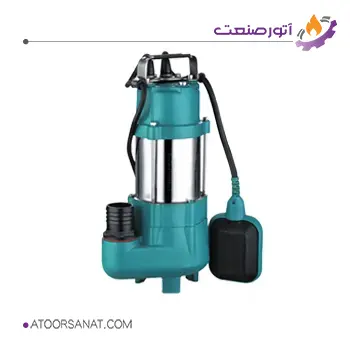
Features:
- Country of Origin: China
- Maximum Head: 22 meters
- Body Material: Cast iron or stainless steel 304
- Impeller Material: Cast iron or stainless steel 304
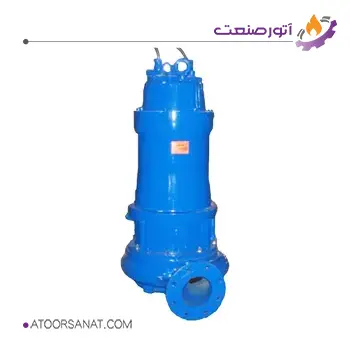
Features:
- Country of Origin: Iran
- Maximum Head: 100 meters
- Body Material: Cast iron
- Impeller Material: Cast iron
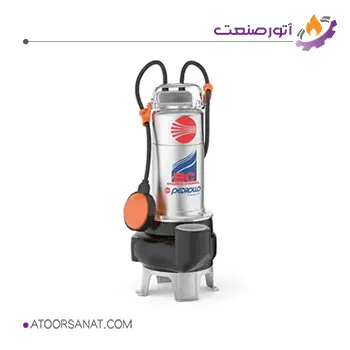
Features:
- Country of Origin: Italy
- Maximum Head: 10.5 – 22 meters
- Body Material: Cast iron, steel, stainless steel 304
- Impeller Material: Stainless steel 304
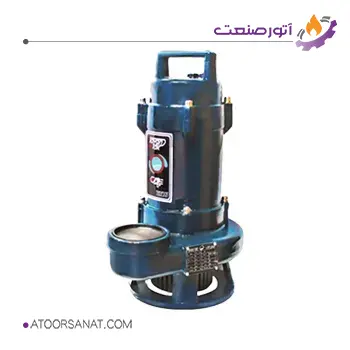
Features:
- Country of Origin: Iran
- Maximum Head: 3 – 20 meters
- Body Material: Cast iron
- Impeller Material: Cast iron
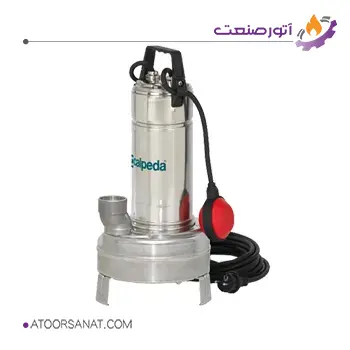
Features:
- Country of Origin: Italy
- Maximum Head: 20 meters
- Body Material: Stainless steel
- Impeller Material: Stainless steel

Features:
- Country of Origin: Italy
- Maximum Head: 10 – 10.5 meters
- Body Material: Cast iron, stainless steel 304
- Impeller Material: Stainless steel 304
How Sewage Pumps Work and Their Types
There are three types of pumps used for pumping sewage: centrifugal, reciprocating, and pneumatic. Let’s explore each type and how they operate.
- Centrifugal Pumps: Centrifugal pumps are the most common type of sewage pump due to their easy installation in pits or tanks and their ability to handle solids in the sewage. A centrifugal pump consists of a rotating impeller enclosed in a rigid casing. To transfer sewage, the pump impeller must be open or semi-open, meaning it should not be completely enclosed by plates with tight tolerances on one or both sides. Additionally, the gap between the impeller vanes in this pump is designed to be large, allowing solid materials to pass through the pump easily and preventing blockages.
Due to the large gap between the vanes, the impeller is designed with a small number of vanes. A pump designed with these specifications is called a non-clog pump. However, pumps with a low number of vanes have lower efficiency. the overall structure of a sewage pump is slightly different from conventional centrifugal pumps. These pumps are usually made of cast iron, but if the sewage is corrosive, they should be made of stainless steel.
- Reciprocating Pumps: Today, due to high initial costs, difficult maintenance, high wear and tear, and broken valves, the number of reciprocating sewage pumps is much lower than other types of pumps; however, in some conditions, due to the presence of sewage with very high viscosity or a large volume of sewage, the use of these pumps is unavoidable. Reciprocating pumps are generally of two types: ram pumps and vane pumps. In a ram pump, a piston with a forward and backward motion pumps the liquid. A diaphragm pump is an example of this type of pump.
The most commonly used type of reciprocating pump for pumping sewage is the diaphragm pump; therefore, its operation is explained in this section. A piston is connected to the center of a rubber diaphragm. The flexibility of the diaphragm allows vertical movement of the piston; therefore, the enclosed volume under the diaphragm changes with each reciprocating motion of the piston. When the piston moves upwards, fluid is sucked into the pump from the inlet valve, and then the movement of the piston causes the inlet valve to close. At this stage, the piston moves downwards, forcing the fluid towards the outlet. The diaphragm pump has a simple operation, a long life, and does not need to be filled with fluid to start. Although after a while, the rubber diaphragm wears out and needs to be replaced.
In a vane pump, a multi-blade rotor with vertical movement pumps the sewage in the pump. In this pump, the liquid is sucked into the pump by the inlet guide vanes and discharged from the pump by the outlet guide vanes. This operation is very similar to a ship’s propeller. A screw pump is an example of this type of pump.
- Pneumatic Pumps: Also known as pneumatic ejectors, these pumps are used for transferring low-flow sewage. The ideal conditions for installing a pneumatic pump are:
- When a small amount of sewage needs to be transferred from a basement to an upper level.
- When the low flow rate of the sewage to be transferred does not justify the economic feasibility of building a pumping system, and a pneumatic system already exists in the building.
- When using a small centrifugal pump could cause the pump to be clogged by sewage.
A pneumatic ejector uses compressed air to transfer sewage. Shone pneumatic ejector, which is more commonly used in practical applications, consists of a sealed cast iron chamber and a spindle-shaped object with two chambers (an inverted upper chamber D and a lower chamber C). There are also two check valves at the inlet (V1) and outlet (V2).
Compressed air enters through the inlet valve V3, which is controlled by a lever mechanism with a counterweight. The inlet air pressure is about 1.5 atmospheres, and this air can exit the pump through the outlet of the chamber. Sewage enters the chamber through the inlet valve V1 due to gravity and slowly moves towards the outlet valve in the chamber. In this state, the compressed air inlet valve is closed, and as the sewage level rises in the chamber, air exits the pump. When the sewage level reaches the upper edge of chamber D, the outlet air valve closes. The increase in the sewage level in the chamber applies pressure to the upper surface of chamber D, causing the lever to move upwards. Due to the upward movement of the lever, the compressed air inlet valve into the chamber opens. With the entry of compressed air into the chamber, the sewage is pushed towards the outlet and enters the discharge pipe. At this stage, with the opening of the outlet valve and the compressed air inlet, the sewage inlet valve closes. The discharge of sewage from the chamber continues until the sewage level reaches a point where the lower chamber pulls the lever downwards and closes the compressed air inlet. At this point, sewage enters the chamber again and the process repeats. To create a continuous flow, ejectors are installed in pairs. In this case, when one is filling, the other is in the discharge phase. The outstanding feature of these pumps is that they operate using compressed air supplied by a central unit, are silent, and most importantly, are non-clogging. These pumps are most economical for heads of about 6 meters. Their flow rates are also between 500 and 10,000 liters per minute.
Components of a Sewage System
A sewage pump is housed within a plastic or metal chamber that receives wastewater from toilets or other sources. When the float switch inside the chamber indicates that the sewage level has reached a specific point, the pump activates and begins pumping the wastewater.
The components of a sewage pump include:
- Pump chamber: The enclosure that houses the pump and wastewater.
- Lifting lugs: Used to open the chamber and remove the pump.
- Electrical cables: For the pump’s alarm system.
- Electrical disconnect box: A safety feature to cut power to the pump.
- Inlet: A 5-inch PVC pipe connecting the chamber to the building’s wastewater sources.
- Pump vent: The pump should have a direct vent or a vent through the inlet pipe, at least 4 feet from the tank.
- Sewage inlet line: This pipe allows wastewater to flow into the chamber by gravity.
- Discharge pipe: A 1 ¼ inch male pipe.
- Concrete pad: A 900-pound concrete slab to protect the chamber.
- Base: 6 feet of coarse gravel beneath the chamber.

